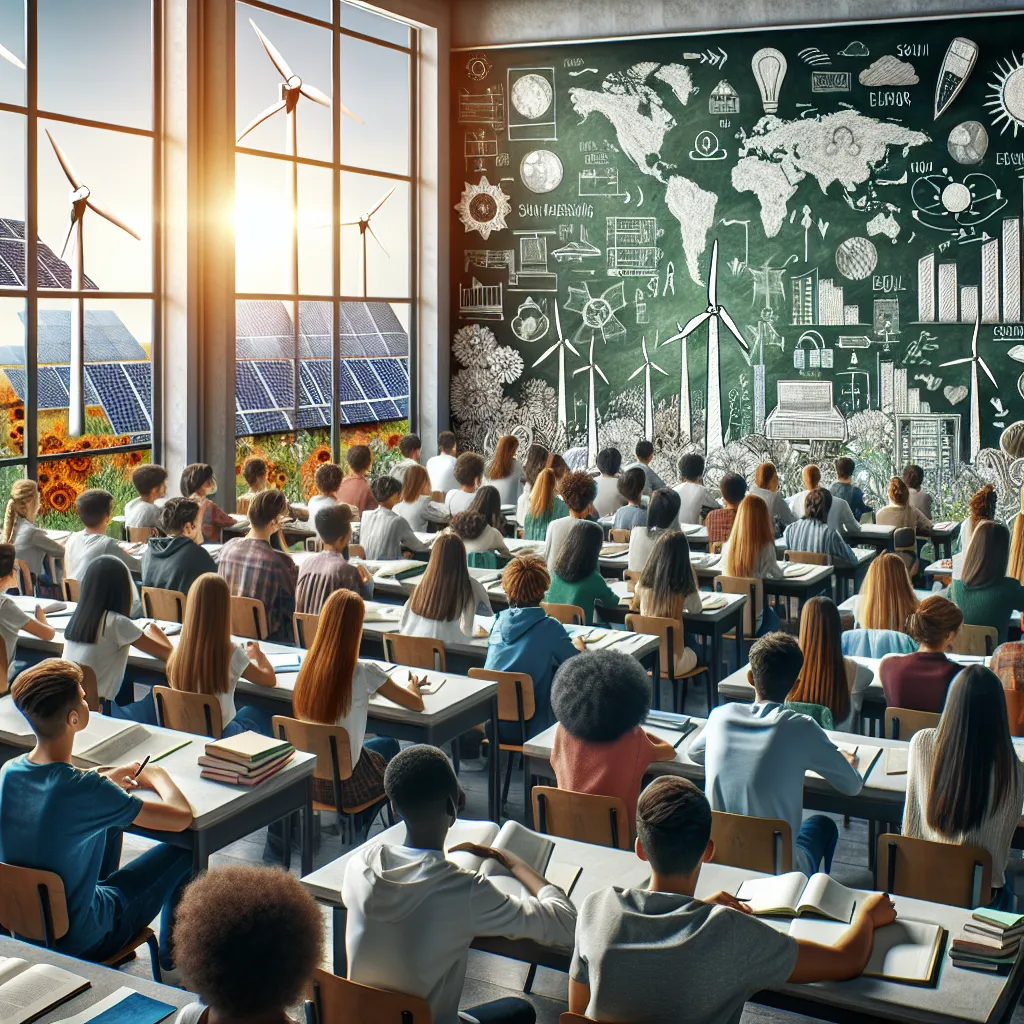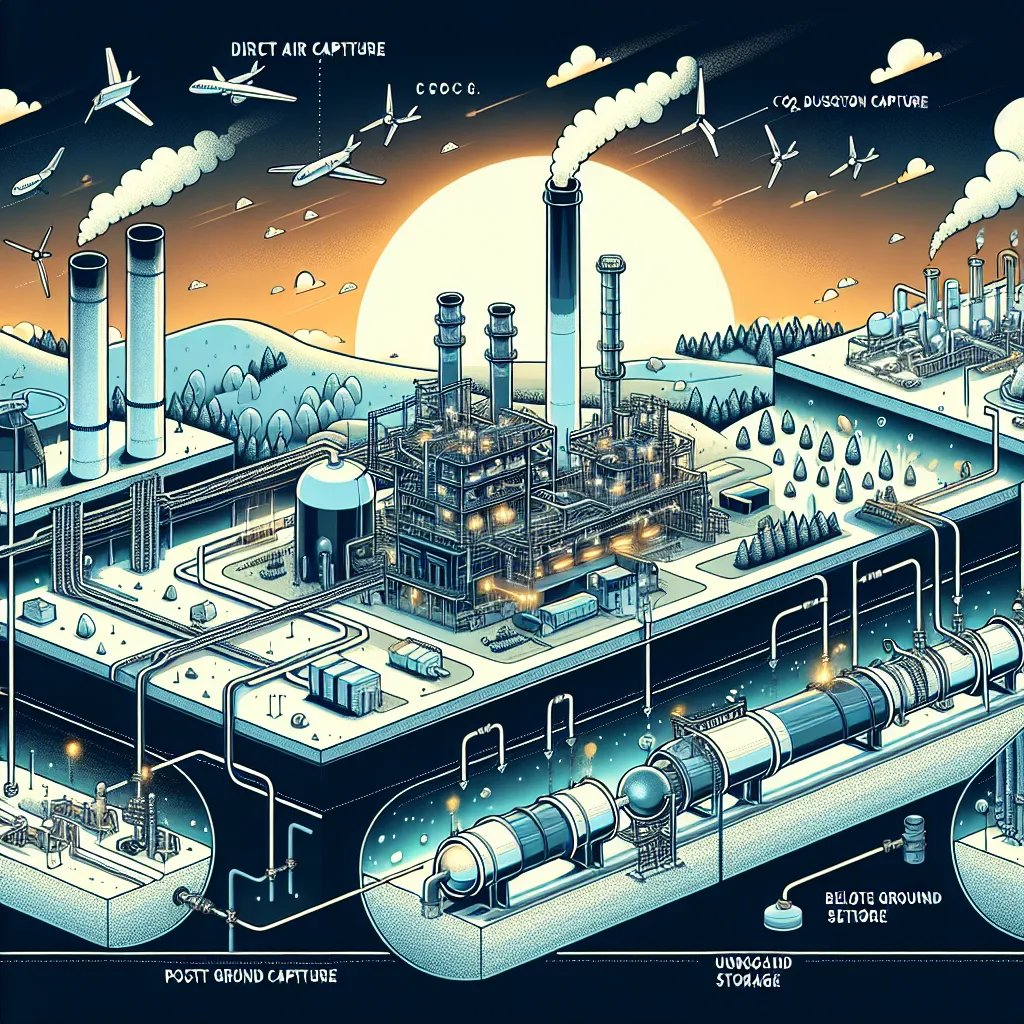As an experienced IELTS instructor, I’m excited to share with you a comprehensive reading practice focused on “The role of education in promoting renewable energy awareness.” This topic is not only relevant to the IELTS exam but also crucial for our understanding of sustainable development. Let’s dive into this practice session, which will help you improve your reading skills and expand your knowledge on this important subject.
Nội dung bài viết
- Introduction to the Reading Test
- Passage 1 (Easy Text): The Basics of Renewable Energy Education
- Reading Text
- Questions 1-5
- Questions 6-10
- Passage 2 (Medium Text): Innovative Approaches in Renewable Energy Education
- Reading Text
- Questions 11-15
- Questions 16-20
- Passage 3 (Hard Text): The Global Impact of Renewable Energy Education
- Reading Text
- Questions 21-26
- Questions 27-33
- Questions 34-40
- Answer Key
- Passage 1 (Easy Text)
- Passage 2 (Medium Text)
- Passage 3 (Hard Text)
 Renewable energy education
Renewable energy education
Introduction to the Reading Test
The IELTS Reading test consists of three passages of increasing difficulty. Today, we’ll explore texts related to renewable energy education, covering various aspects of this topic. Remember, time management is crucial in the IELTS Reading test. You have 60 minutes to complete all three passages and answer 40 questions. Let’s begin with our practice materials.
Passage 1 (Easy Text): The Basics of Renewable Energy Education
Reading Text
Renewable energy education is becoming increasingly important in today’s world. As we face the challenges of climate change and depleting fossil fuel resources, it’s crucial that we educate the next generation about sustainable energy sources. Schools and universities around the globe are incorporating renewable energy topics into their curricula, ranging from basic science classes to specialized engineering courses.
One of the primary goals of renewable energy education is to raise awareness about the environmental benefits of clean energy sources. Students learn about solar, wind, hydroelectric, and geothermal power, understanding how these technologies can reduce our carbon footprint. Additionally, they explore the economic aspects of renewable energy, including job creation in the green sector and potential cost savings for consumers.
Hands-on learning experiences play a vital role in renewable energy education. Many schools are installing solar panels or small wind turbines on their campuses, providing students with real-world examples of these technologies in action. Some institutions even offer internships or partnerships with renewable energy companies, allowing students to gain practical experience in the field.
The impact of renewable energy education extends beyond the classroom. Students often become advocates for clean energy in their communities, sharing their knowledge with family and friends. This ripple effect helps to build a more informed society that is better equipped to make sustainable choices and support renewable energy initiatives.
As renewable energy technologies continue to advance, education in this field must also evolve. Schools and universities are constantly updating their curricula to reflect the latest developments in clean energy. This dynamic approach ensures that students are well-prepared to contribute to the growing renewable energy sector and to make informed decisions about energy use in their personal and professional lives.
Questions 1-5
Do the following statements agree with the information given in the reading passage?
Write
TRUE if the statement agrees with the information
FALSE if the statement contradicts the information
NOT GIVEN if there is no information on this
- Renewable energy education is only important for university students.
- Learning about renewable energy can lead to job opportunities in the green sector.
- All schools have installed solar panels or wind turbines for educational purposes.
- Students who learn about renewable energy often share their knowledge with others.
- The curriculum for renewable energy education remains constant over time.
Questions 6-10
Complete the sentences below.
Choose NO MORE THAN TWO WORDS from the passage for each answer.
- Renewable energy education aims to raise awareness about the __ benefits of clean energy sources.
- Students learn about various types of renewable energy, including solar, wind, hydroelectric, and __ power.
- Many schools provide __ learning experiences to teach about renewable energy.
- Some educational institutions offer __ or partnerships with renewable energy companies.
- The dynamic approach to renewable energy education prepares students to make informed decisions about __ in their lives.
Passage 2 (Medium Text): Innovative Approaches in Renewable Energy Education
Reading Text
The field of renewable energy education is rapidly evolving, with innovative approaches being developed to engage students and enhance learning outcomes. As the urgency to address climate change grows, educators are employing creative methods to instill a deep understanding of sustainable energy solutions in their students.
One notable trend is the integration of gamification into renewable energy curricula. Educational institutions are leveraging the power of interactive games and simulations to make complex concepts more accessible and engaging. For instance, some schools have implemented virtual reality (VR) experiences that allow students to explore wind farms or solar panel installations, providing an immersive understanding of how these technologies function in real-world settings.
Another innovative approach is the implementation of project-based learning (PBL) centered around renewable energy themes. Students are tasked with designing and executing projects that address real-world energy challenges in their communities. These projects might involve creating small-scale solar-powered devices, developing energy-efficient building designs, or proposing renewable energy solutions for local businesses. This hands-on approach not only reinforces theoretical knowledge but also cultivates problem-solving skills and fosters a sense of environmental stewardship.
Interdisciplinary collaboration is becoming increasingly prevalent in renewable energy education. Recognizing that sustainable energy solutions require expertise from various fields, schools are breaking down traditional subject silos. For example, courses might combine elements of environmental science, engineering, economics, and public policy to provide a holistic understanding of renewable energy implementation. This interdisciplinary approach prepares students for the complex, multifaceted nature of real-world sustainability challenges.
The rise of massive open online courses (MOOCs) has democratized access to renewable energy education. Prestigious universities and organizations now offer free or low-cost online courses covering various aspects of sustainable energy. These platforms allow learners from around the world to access high-quality educational content, fostering a global community of renewable energy advocates and practitioners.
Partnerships between educational institutions and industry leaders are also playing a crucial role in advancing renewable energy education. Many schools are collaborating with renewable energy companies to develop curricula that align with industry needs. These partnerships often include guest lectures from industry experts, site visits to renewable energy facilities, and internship opportunities for students. Such collaborations ensure that educational programs remain relevant and prepare students for careers in the rapidly evolving renewable energy sector.
Lastly, the concept of “living laboratories” is gaining traction in renewable energy education. Some educational institutions are transforming their campuses into showcases of sustainable technologies. By integrating renewable energy systems into their infrastructure, these schools provide students with tangible examples of sustainable practices. This approach not only enhances learning but also demonstrates the institution’s commitment to sustainability, inspiring students to become agents of change in their future careers and communities.
Questions 11-15
Choose the correct letter, A, B, C, or D.
-
What is one of the innovative approaches mentioned in renewable energy education?
A) Traditional lecture-based learning
B) Gamification and virtual reality experiences
C) Focusing solely on theoretical concepts
D) Limiting education to university-level students -
Project-based learning in renewable energy education aims to:
A) Teach only theoretical concepts
B) Focus on individual learning without practical application
C) Address real-world energy challenges in communities
D) Limit learning to classroom environments -
The interdisciplinary approach in renewable energy education:
A) Focuses on a single subject area
B) Combines various fields such as science, engineering, and economics
C) Avoids addressing public policy issues
D) Discourages collaboration between different departments -
Massive open online courses (MOOCs) in renewable energy education:
A) Are only available to students in developed countries
B) Are always expensive and inaccessible
C) Provide access to high-quality educational content globally
D) Focus solely on theoretical aspects without practical applications -
The concept of “living laboratories” in educational institutions refers to:
A) Traditional science labs with no renewable energy focus
B) Virtual simulations of renewable energy systems
C) Campuses showcasing integrated sustainable technologies
D) Isolated research facilities not accessible to students
Questions 16-20
Complete the summary below.
Choose NO MORE THAN TWO WORDS from the passage for each answer.
Innovative approaches in renewable energy education are transforming the way students learn about sustainable energy solutions. One trend is the use of (16) __ and virtual reality to make complex concepts more engaging. (17) __ learning allows students to work on real-world energy challenges, fostering problem-solving skills. Many institutions are adopting an (18) __ approach, combining various fields of study to provide a comprehensive understanding of renewable energy. (19) __ have made renewable energy education more accessible globally. Partnerships between schools and (20) __ ensure that educational programs align with current industry needs and prepare students for future careers in the sector.
Passage 3 (Hard Text): The Global Impact of Renewable Energy Education
Reading Text
The proliferation of renewable energy education across the globe has ushered in a paradigm shift in how societies approach energy production and consumption. This educational revolution is not merely confined to academic institutions but has far-reaching implications for policy-making, economic development, and social transformation. As the world grapples with the exigencies of climate change, the role of education in promoting renewable energy awareness has become increasingly pivotal in shaping a sustainable future.
One of the most significant impacts of renewable energy education is its influence on public perception and behavior. As individuals become more knowledgeable about the benefits and feasibility of renewable energy sources, there is a noticeable shift in consumer preferences and lifestyle choices. This heightened awareness often translates into increased demand for renewable energy products and services, creating a positive feedback loop that accelerates the transition to clean energy. Moreover, educated citizens are more likely to support and advocate for policies that promote renewable energy adoption, putting pressure on governments and corporations to prioritize sustainable practices.
The economic ramifications of widespread renewable energy education are profound and multifaceted. As more individuals gain expertise in renewable technologies, there is a burgeoning workforce ready to meet the demands of the growing green energy sector. This has led to the creation of numerous jobs across various industries, from solar panel installation to wind turbine manufacturing. Furthermore, countries that invest heavily in renewable energy education often find themselves at the forefront of technological innovation, gaining a competitive edge in the global market. This economic boost is particularly significant for developing nations, where renewable energy education can catalyze sustainable development and provide pathways out of energy poverty.
On a geopolitical level, the dissemination of renewable energy knowledge is reshaping international relations and energy security dynamics. Countries that have traditionally relied on fossil fuel exports are now compelled to diversify their economies and invest in renewable energy education to remain relevant in a changing global energy landscape. Conversely, nations that lack conventional energy resources but invest in renewable energy education can achieve greater energy independence and reduce their vulnerability to geopolitical tensions associated with fossil fuel supply chains.
The impact of renewable energy education extends to the realm of environmental conservation and biodiversity protection. As students and professionals gain a deeper understanding of the ecological impacts of different energy sources, there is a growing emphasis on developing renewable technologies that minimize harm to ecosystems. This has led to innovations in wildlife-friendly wind turbines, solar farms that double as pollinator habitats, and hydroelectric systems designed to protect fish populations. The integration of ecological considerations into renewable energy education fosters a more holistic approach to sustainable development, ensuring that the transition to clean energy does not come at the expense of biodiversity.
In the domain of urban planning and architecture, renewable energy education is transforming the way cities are designed and built. Architects and urban planners educated in sustainable energy principles are incorporating renewable technologies into building designs, creating energy-efficient structures that generate their own power. This trend towards “net-zero” buildings and smart cities is not only reducing urban carbon footprints but also improving quality of life for residents through cleaner air and reduced energy costs.
The social equity dimension of renewable energy education cannot be overstated. By making knowledge about clean energy accessible to marginalized communities, education serves as a powerful tool for addressing energy inequality. In many parts of the world, renewable energy education programs are empowering rural communities to implement off-grid solar solutions, providing electricity to areas previously without access. This democratization of energy production through education has the potential to reduce poverty, improve health outcomes, and enhance educational opportunities in underserved regions.
Lastly, the global impact of renewable energy education is evident in the emergence of international collaboration and knowledge sharing. Educational institutions, governments, and non-governmental organizations are forming cross-border partnerships to exchange best practices and conduct joint research in renewable energy. These collaborations are accelerating the pace of innovation and enabling the rapid dissemination of new technologies and methodologies across the globe. As a result, solutions developed in one part of the world can quickly be adapted and implemented in others, creating a truly global response to the challenge of transitioning to sustainable energy systems.
Questions 21-26
Complete the sentences below.
Choose NO MORE THAN TWO WORDS from the passage for each answer.
-
Renewable energy education has a significant impact on public __ and behavior, leading to changes in consumer preferences.
-
The growth of renewable energy education has led to the creation of numerous jobs in the __ sector.
-
Countries investing in renewable energy education often gain a __ in the global market.
-
Renewable energy education is reshaping __ and energy security dynamics on a global scale.
-
In urban planning, renewable energy education is promoting the development of “__” buildings and smart cities.
-
International __ in renewable energy education is accelerating innovation and knowledge sharing globally.
Questions 27-33
Do the following statements agree with the information given in the reading passage?
Write
TRUE if the statement agrees with the information
FALSE if the statement contradicts the information
NOT GIVEN if there is no information on this
-
Renewable energy education is limited to academic institutions and does not affect policy-making.
-
Increased knowledge about renewable energy leads to greater support for sustainable energy policies.
-
Developing nations cannot benefit economically from investing in renewable energy education.
-
Countries traditionally reliant on fossil fuels are unaffected by the growth of renewable energy education.
-
Renewable energy education has led to innovations in wildlife-friendly energy technologies.
-
The implementation of renewable energy in urban planning always results in higher energy costs for residents.
-
Renewable energy education programs are helping to address energy inequality in marginalized communities.
Questions 34-40
Complete the summary below.
Choose NO MORE THAN TWO WORDS from the passage for each answer.
Renewable energy education has a profound global impact, influencing various aspects of society. It shapes (34) __ perception, leading to changes in consumer behavior and policy support. Economically, it creates jobs and fosters (35) __ in the green energy sector. On a geopolitical level, it is changing (36) __ and energy security dynamics. The education also promotes (37) __ conservation by encouraging the development of eco-friendly renewable technologies. In urban areas, it is transforming (38) __ and architecture, leading to more sustainable city designs. Importantly, renewable energy education addresses (39) __ by making clean energy knowledge accessible to marginalized communities. Finally, it facilitates (40) __ collaboration, accelerating innovation and knowledge sharing across borders.
Answer Key
Passage 1 (Easy Text)
- FALSE
- TRUE
- FALSE
- TRUE
- FALSE
- environmental
- geothermal
- hands-on
- internships
- energy use
Passage 2 (Medium Text)
- B
- C
- B
- C
- C
- gamification
- Project-based
- interdisciplinary
- MOOCs
- industry leaders
Passage 3 (Hard Text)
- perception
- green energy
- competitive edge
- international relations
- net-zero
- collaboration
- FALSE
- TRUE
- FALSE
- FALSE
- TRUE
- FALSE
- TRUE
- public
- innovation
- international relations
- environmental
- urban planning
- social equity
- international
This comprehensive IELTS Reading practice test covers various aspects of the role of education in promoting renewable energy awareness. By working through these passages and questions, you’ll not only improve your reading skills but also gain valuable knowledge about this crucial topic. Remember to practice time management and use the strategies we’ve discussed in our IELTS preparation sessions.
For more IELTS practice materials and tips, check out our other resources on the role of education in environmental conservation and the role of governments in promoting sustainable energy. Good luck with your IELTS preparation!


